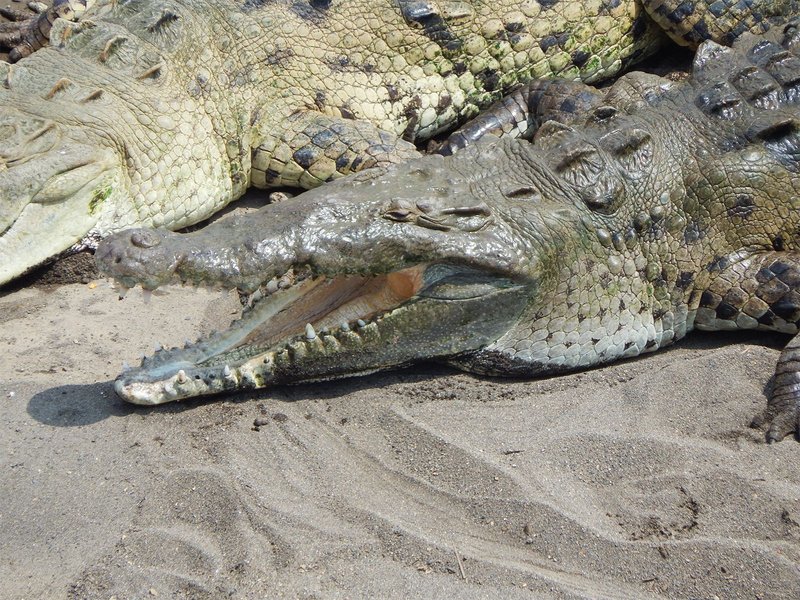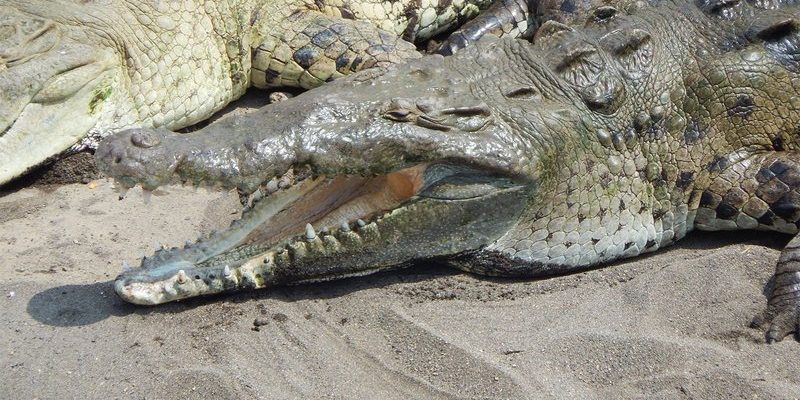
Honestly, the answer isn’t as black and white as you might think. Crocodiles are wild animals, and like all of nature’s creatures, they have their instincts and behaviors. It’s a bit like comparing them to a hockey player—just because they can be aggressive doesn’t mean they’ll always check you into the boards. Let’s take a closer look at these fascinating reptiles and see how they interact with humans.
Understanding the American Crocodile
The American crocodile is a distinct species, scientifically labeled *Crocodylus acutus*. They thrive in both saltwater and freshwater habitats, often making their homes in marshes, lagoons, and coastal areas. Their long, slender snouts are specially adapted for catching fish, their primary food source.
However, they can also eat a variety of prey, including birds, mammals, and even other reptiles. The way they hunt is both incredible and somewhat daunting. Crocodiles are known for their stealth. They can stay submerged for long periods, just waiting for the perfect moment to strike with lightning speed. This hunting strategy is what makes them formidable.
You might be wondering about how often they interact with humans. While they generally prefer to avoid people, an encounter can happen, especially in areas where human habitation encroaches upon their territory.
Are American Crocodiles Aggressive?
Crocodiles can be territorial and aggressive, especially during the breeding season. Males are known to defend their territory vigorously, especially if they perceive a threat. This doesn’t mean they’re out to get humans, but they will defend themselves if they feel cornered or threatened.
Here’s something to think about: crocodiles are like wild animals in a zoo. They might seem calm behind the glass, but they’re still wild on the inside. Human activities, like fishing or swimming near nesting sites, can provoke a defensive response.
Most often, if left alone, American crocodiles will avoid humans. But it’s essential to respect their space and habitat. It’s a bit like meeting a friend’s dog; you wouldn’t run up to it without knowing its temperament.
Human-Crocodile Interactions
You might have heard stories of crocodile attacks on humans, which can sound terrifying. These incidents are relatively rare, but they do happen. American crocodiles tend to be less aggressive compared to their relatives, like the Nile crocodile. But when an attack occurs, it often results from the croc feeling threatened or if someone wanders too close to its territory or nest.
In Florida, for example, there are reports of crocodiles attacking fishers or swimmers who venture too close to their basking spots. Although these attacks might scare you, keep in mind that they usually happen in specific circumstances. Understanding their behavior can help prevent unnecessary confrontations.
Let’s break it down a bit:
- Most attacks occur when humans invade their territory.
- Crocodiles can be aggressive if they feel threatened or provoked.
- Common areas for encounters include beaches, shallow waters, and estuaries.
Safety Tips Around American Crocodiles
If you live near or plan to visit areas where American crocodiles are found, keeping safety in mind is essential. Here are some practical tips to help you avoid dangerous encounters:
1. Stay Away from the Water’s Edge: When near lakes, rivers, or coastal areas, keep a safe distance from the water’s edge, especially at dawn or dusk when crocodiles are more active.
2. Be Cautious in Known Habitats: If you’re in a region known for crocodile sightings, like the Everglades, be extra vigilant. Check local guidelines and follow any signs indicating croc presence.
3. Don’t Feed the Crocs: While it might seem harmless to throw food near the water, feeding crocodiles can make them associate humans with food, increasing the likelihood of aggressive encounters.
4. Observe from a Distance: If you spot a crocodile, enjoy the view but stay back. Use binoculars for a closer look without putting yourself at risk.
By respecting their habitat and maintaining a safe distance, you can enjoy the beauty of these creatures without putting yourself in danger.
Conservation and Respect for Crocodiles
Conservation efforts play a massive role in protecting the American crocodile and ensuring safe cohabitation with humans. Their populations have declined due to habitat loss, hunting, and pollution. Thankfully, they are now considered a threatened species and are protected by law in many areas.
Here’s the thing: healthy ecosystems are essential for both humans and wildlife. By preserving their natural habitats, we reduce the chances of human-crocodile interactions while supporting biodiversity. Everyone benefits when we treat these magnificent reptiles with respect.
Additionally, organizations work to educate people about crocodile behaviors and conservation. Learning more about them not only helps with awareness but also fosters appreciation for these often-misunderstood animals.
So, can the American crocodile be dangerous to humans? Yes, but it’s largely a matter of context. Understanding their behavior and respecting their space can help mitigate risks. Just like any wild animal, they deserve our respect and care, ensuring a healthy balance between humans and nature.
Next time you’re near a crocodile habitat, remember the golden rule: observe, don’t disturb. By doing this, you not only keep yourself safe, but you also contribute to the preservation of these incredible creatures. Let’s cherish our wild neighbors—one respectful encounter at a time.

